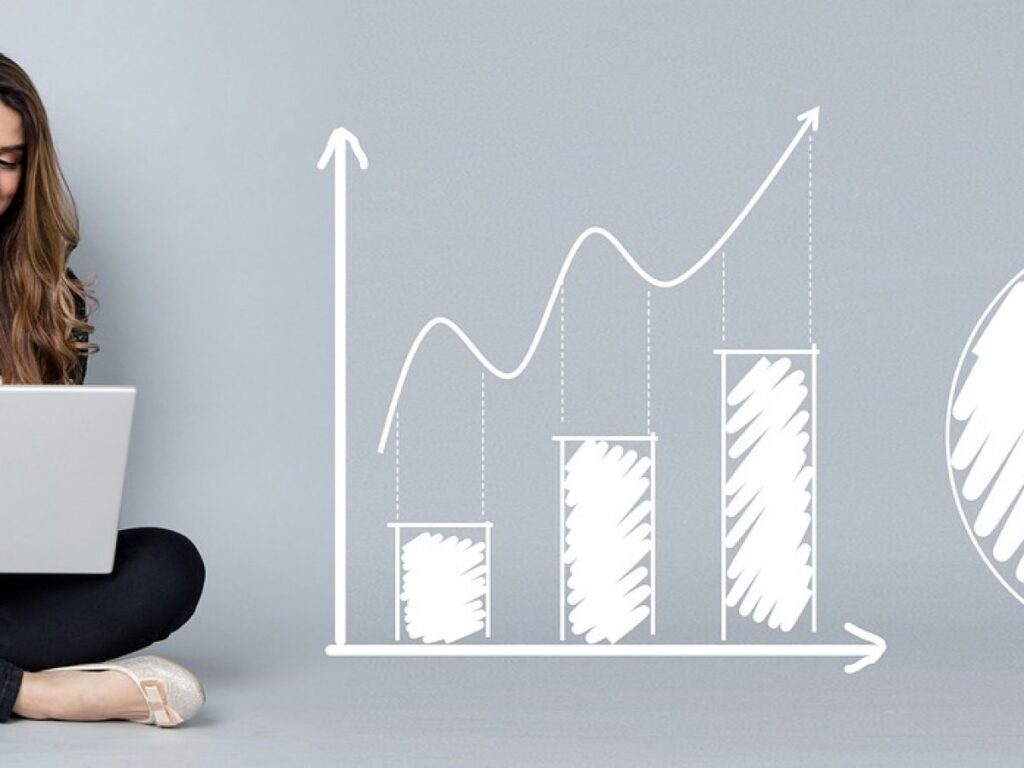In the field of digital marketing, conversion takes place when a visitor to a website performs an action intended to benefit the company, for example, buying something or signing up to receive an email newsletter, downloading material, or interacting with the use of a CTA (Call-to-Action). Conversions mark the transition of a user from a passive visitor to an engaged lead or customer, making them a crucial metric for measuring website and campaign effectiveness. Achieving high conversion rates depends on compelling copy, intuitive design, and seamless user experience. By constantly improving these aspects, businesses can motivate more people to take action, eventually improving customer retention, acquisition, and, in addition to revenue.
What is a Conversion?
We refer to it as a Conversion when the receiver of the marketing message takes an action they want to take. Conversion is an important measure within the marketing funnel; however, it doesn’t always refer to whether a buyer has made a purchase. Conversions may also occur before a sale, and can be a sign that a buyer has progressed further down the funnel of sales funnel.
Why Do Conversions Matter?
Since that’s how they can determine whether their marketing funnels to market are operating correctly. There aren’t many customers who are ready to purchase at the moment they land on a web page. With multiple touchpoints set and analyzing conversions for every one, leads will be directed into the sales funnel. Conversions enable businesses to distinguish between those who are interested in the offerings as opposed to those who aren’t; those who take the desired actions become leads.
Conversions also allow businesses to find issues with their websites as well as marketing channels. Through analyzing the customer’s journey and identifying bottlenecks, marketers can identify what’s not working and what factors bring in the highest number of customers, and which ones need to be removed.
In the end, although conversions are crucial, they are only a part of the puzzle. Getting the journey of the customer is smooth, free of obstacles or friction, and is essential to increasing sales.
Examples of Conversions
Conversion definition is dependent on the type of website you run. If you are selling products, the conversion could be an order. If your site’s purpose is to persuade customers to reach out or request a price or other offers, it could be a method of submission. A phone call could be considered a conversion in the event that your website’s objective is.
For B2B (business-to-business) enterprises or complex B2C (business-to-consumer) operations, a conversion can be visits to a key landing page, views of a marketing video, whitepaper downloads, newsletter signups, or form submissions.
In e-commerce, the most popular methods of conversion are signing up for the newsletter, clicking the CTA (call to action) in an email, or filling out an inquiry form on your website. Obviously, the most important conversion happens when a buyer actually purchases something on your site.
Many strategies can help businesses improve the number of conversions they get on their site, such as UI/UX and how the site is organized (visitors are enticed to purchase through strategic designs), as well as more sophisticated methods like the menu being hidden when a user starts scrolling through the site.
A conversion strategy in place is crucial to increasing sales. Finding ways to improve conversion rates is often referred to as conversion rate optimization (CRO).
Why Is Conversion Rate Optimization Important?
You may be enticed to believe that businesses that sell retail products don’t need to improve their conversion rates since consumers are always buying what they want, and if they’ve clicked the advertisement of a product and landed on the page of the product, that’s nearly guaranteed. Right? It’s possible that this could be far than the fact that there are many causes why people abandon a site without purchasing (e.g, not securing the seller’s trust and not being able to make use of their preferred payment method, or being required to pay for shipping).
CRO is crucial as it enables online stores to maximize the traffic they receive in order to not have to spend more money on the acquisition of customers. Since the demand for ads on websites is increasing every day, so are prices for pay-per-click. Companies are always increasing their advertising budgets; however, since some clicks don’t result in sales, CRO becomes essential to keep costs down while increasing revenues per visit.
How to Calculate the Conversion Rate
A conversion percentage is defined as the proportion of people who visit a website that achieve a specific objective (specific step). Common conversion goals include:
- Submitting information
- Subscribing to an email newsletter
- Making a call to a specific number
- The process of creating an account
- Forms and forms
- Downloading the resource
The choice of a particular conversion goal will be based on the specifics of your company and the objective of the site. Furthermore, conversions can be classified into macro-conversions and micro-conversions. Macro-conversions have primary objectives like quotes or sales requests, while micro-conversions merely aid in the process of macro-conversions (e.g., adding items to cart).
Based on the way you wish to define a conversion as well as the method you use to measure the amount of traffic, there are many methods of calculating your conversion percentage.

Common Conversion Rate Formulas:
The conversion rate is (Total number of conversions/ the total number of sessions) 100
Rate of conversion = (Total number of conversions/ the Number of Unique Visitors) 100
The conversion rate is (Total number of conversions/ the total quantity of Leads) 100
Let’s consider a real-world example. If your website gets 13,000 visitors per month through your advertising campaigns and you receive 2,600 conversions, your conversion rate is 20 percent.
CRO Methods
Every website is unique, and there are numerous ways online stores can improve their sales conversion rates. An effective software to improve conversion is crucial. Here are a few important aspects for retailers:
Focus on a Segment at a Time
It is important to note that the landing pages that work well are the ones that give immediate solutions. Instead of filling the pages to appeal to an entire population, select a particular segment to which you can tailor your answers.
Create Conversion-Oriented Content
Copy is perhaps the most crucial element of the website, and good marketing content can seamlessly combine the possibility of conversion. Shops that are online often fill their content with keywords that are designed to attract the search engines; however, using this method can turn people off, which affects the rate of conversion.
Instead, they should make their ads be arousing experience for the viewer and make use of fewer, but more potent keywords with a clear intention (e.g. dresses as opposed to reduced red gowns). Content marketing is currently one of the most talked about areas of digital marketing, like social media, and grows more significant to increase conversion rates.
Get Rid of Flash
Today, online stores receive the majority the traffic (and sales) via mobile devices as well as mobile advertisements. Thus the use of Flash, which is a technology that was designed for desktop users, can harm user experiences on a website. In addition to it is true that Google is unable to crawl Flash elements, so it is not helpful in SEO. (SEO).
Online retailers will experience an improvement in conversion rates just by getting rid of the Flash components from their sites.
Perform Regular Tests
To improve the conversion rate, it is necessary to establish benchmarks for forms completed, contact form phone calls, and orders for products. Monitoring and testing regularly can help online shops create strategies for marketing going forward. Enhancing the quality of content on websites, ad campaigns (including mobile ads), as well as the call to action, results in higher clickthrough rates and more success in the campaign for lead generation.
When determining the top landing pages and comparing them with pages that have high exit rates, companies can pinpoint what elements they should enhance to increase their conversion rates. Regularly conducting A/B testing to improve content on websites or improve strategies when it is possible is crucial.
Conversion Testing
Testing lets online shops evaluate the improvement that certain changes can bring to the landing page and website. Conversion testing involves providing various content to different visitors and then analyzing the effect of the new content on conversions and conversion rate.

Why Is Testing Conversions Important?
Google Analytics is a great tool to use Google Analytics to track conversions by setting goals, or more elaborate conversion funnels.
Which one do you think is more straightforward to do? The increase in traffic will mean more money to spend on ads, and likely much time lost… Increasing the rate of conversion is, however, cheaper and quicker. When you have decided to improve conversion rates, you can make use of two approaches: A/B tests as well as multivariate tests.
Alternatively, you can play using several different variations at the same time However, for the most accurate results, you’ll need more time and a significant volume of traffic.
CRO Metrics
When conducting CRO, you could believe that conversion rates are the most important factor to track. In reality, it might not be. CTR (click-through rate) could be more crucial. The more high CTR is, the higher CTR is the better your conversion rates.
Another crucial aspect to consider is the time that users spend on a page. Time is among the most valuable resources for site visitors. Therefore, if users leave your site shortly after having entered, your website’s content might not appeal to them.
The conversion rate is based on the bounce rate. The bounce rates of the e-commerce market vary across industries, but generally hover around 60 percent. The sector in which you are operating, the top websites in the e-commerce industry typically have an average bounce rate of 36 percent or less. A lower bounce rate won’t necessarily increase sales, but it increases the chance that the customer will make a purchase.
What Is a Conversion in Business?
In the world of online business or eCommerce, conversion is the word used to define the process of turning visitors who visit your website to becoming paying customers. Conversion refers to an action customers are taking on your website. It is measured by the conversion rate, or the percentage of people who complete the step.
What Is Conversion in Social Media?
Experts define conversion as “The point at which a recipient of a marketing message performs a desired action.” In the sense of conversion, in social media, it is convincing someone to take action in response to your appeal for action. It might involve clicking the link like a post, liking it, or following your page, or even commenting.
FAQs
What Are the Examples of Conversion?
Conversion is the process of persuading an individual to do something they want, for example, buying something or filling out a form or signing up for an email newsletter, or downloading an application. Examples of conversion could be the checkout procedure on an online retailer or registering for a service, signing up to attend an event, or clicking an advertisement. Conversion may also be a reference to activities that are not monetary, such as connecting with content or sharing posts on social media, or writing reviews.
What Is the Best Conversion Strategy?
A few effective strategies for conversion are to optimize the user experience, making it effortless and intuitive for users to perform desired actions. This is done by using convincing messages and calls to action that clearly explain the advantages of taking an action, like discounts or free trials, offering social proof via testimonials and reviews from customers, and utilizing data-driven insight to constantly improve and enhance strategies for conversion over time.




